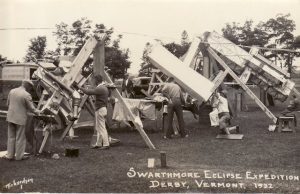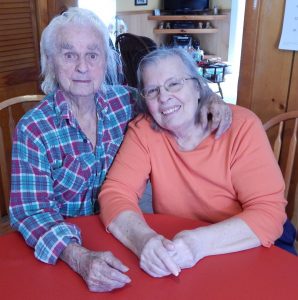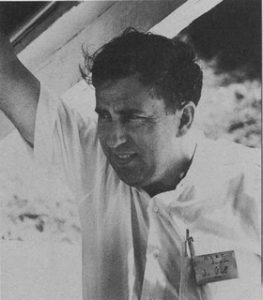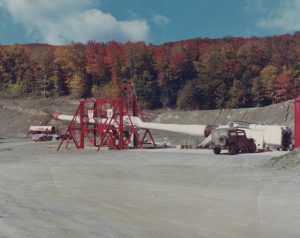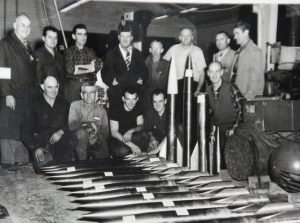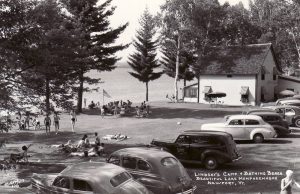
This is an article I wrote several years about Lindsay’s Beach in Derby.
The Sands of Lindsay’s Beach
by Scott Wheeler
Born on December 19, 1829 in Derby, Vermont, John Parker Lindsay went on to become a respected inventor and manufacturer of metal products who, according to his obituary, had close ties with President Abraham Lincoln’s administration, and at least loose ties to the president himself. Lindsay held a number of patents, including for at least two firearms, a pistol and a rifle, specially designed for use by Union forces in the Civil War and Indian warfare.
In 1884, after his long career in which he lived, worked and traveled the northeastern United States, Lindsay retired home to his roots in Derby. His wife, Julia, joined him in his childhood community. On October 29 of that year, the couple bought a house and barn, along with 60 acres of land off of what today is the Darling Hill Road in Derby.
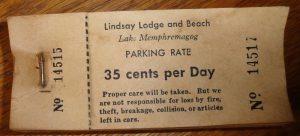
More than 125 years later, the house still stands. It is now owned by David and Jo Ann French.
The Lindsays’ land has long been subdivided and sold. Homes have sprung up where there were once only farm fields. A few descendants of John and Julia Lindsay still own some of the original acreage along Lake Memphremagog. One parcel of the Lindsays’ property, an acre and a half piece on the shores of the lake, is owned by Lyndol “Lyndy” and Evelyn (Bray) Palin. They live in what was John and Julia Lindsay’s lake house, located only a few yards from the lake, and about two miles from the Quebec border. Mrs. Palin is the great-granddaughter of John and Julia Lindsay.
“When John Lindsay bought the land there was nothing on the beach,” Mr. Palin said. In researching town records, he has determined the Lindsays built the home in 1891; it first appeared on the tax rolls in 1892.
“Mr. Lindsay wanted a summer home on the lake,” Mrs. Palin said. “That’s why they built this house.”
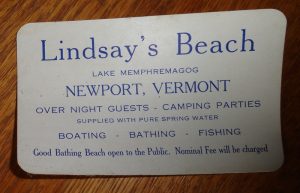
While it is Mrs. Palin whose ancestral roots run deep on that piece of land, Mr. Palin, who has a keen interest in history, has spent countless hours researching and tracking the life of John Lindsay, including his ties to the Lincoln administration, and the mysteries of the Derby native’s involvement in the Civil War, apparently as a civilian.
A subsequent article about these portions of Mr. Lindsay’s life will appear in a future issue of the Journal. “I think he was a fascinating fellow,” Mr. Palin said.
John Lindsay died on April 13, 1892 , and Julia died in 1917. After their death the family homestead where they’d settled when they retired to Vermont, was sold. The rest of the property was divided up among their four children: Howard (Evelyn Palin’s grandfather), Walter, Will, and Adelide.
It was this lakeside parcel of property that was eventually inherited by Evelyn Palin, which went on to bring so much joy to people from near and far. For upwards of three decades, Lindsay’s Beach was open to the public, including hosting public swim lessons for area young people. It was owned by Howard and his wife, Alice (a native of Orford, New Hampshire).
Howard worked aboard the trains as a border officer. Because the railroad tracks passed by yards from the lakeside home, the passing train would slow enough for Howard Lindsay to board the train to do his job for the remainder of the day, Mr. and Mrs. Palin said.
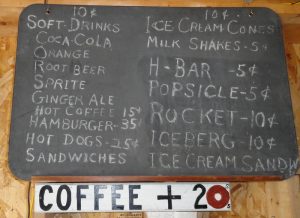
Although the Palins haven’t been able to conclude the exact year that Howard and Alice Lindsay decided to transform their home into a lakeside destination, they believe it was in the early 1930s. By the early 1940s the summer camp had been turned into a tourist home for vacationers.
Born in 1924 in New Jersey, Evelyn Palin, the daughter of Fred and Dorothy (Lindsay) Bray, has been coming to the family’s ancestral property her entire life. That is where her father, who worked on Wall Street, took the family on his vacations.
“I started coming here as a baby in a carriage,” Mrs. Palin said. Her mother, Dorothy (Lindsay) Bray, was the daughter of Howard and Alice Lindsay who by then owned the property. Mrs. Lindsay, along with her brother, John Park Lindsay (named after his grandfather), were born in John and Julia Lindsay’s home, which is now owned by the Frenches.
Lindsay’s Camp and Bathing Beach, or more commonly known as Lindsay’s Beach, was far more than a swimming hole for locals. Yes, locals flocked to the beach, but so did people far from the Northeast Kingdom.
“Most came from the New York and New Jersey area,” Mr. Palin said. “Others came from other states.”
Howard Lindsay’s involvement in the lodging and recreation area was short-lived. He died in 1941, a few years after it was open to the public.
“Alice Lindsay was great,” Mrs. Palin said. “She loved the people and she loved the young people. She got right into it.”
And Mr. Palin added, “She was noted for her cooking and being a great hostess. She was a flashy gal for her age.”
The Palins told how Mrs. Lindsay apparently was born with the hospitality business in her blood. Among the local establishments she worked in was the eloquent Newport Hotel, which was located on Main Street. She worked there as a hostess. And the story in the family is she met the man who would become her husband, Howard Lindsay, while working at an establishment in Barton.
At first the couple simply opened the property up to swimmers, but in time, likely after Howard Lindsay’s death, she rented out the lodge (what is now the Palins’ home) to guests. There were often ten to 12 guests in the house at a time, and there were only two toilets, and one clawfoot bathtub with no shower.
“Can you imagine all those people from New York and around staying here with only one bathtub?” Mrs. Palin said. Meanwhile, she said Mrs. Lindsay, her cook, and waitresses slept in what was called the bunkhouse, a building located a few steps from the house.
“One end of the building had two rooms, each had four bunk beds where the waitresses slept,” Mr. Palin said. “Then there was another little room with a single bed. This is where Mrs. Lindsay stayed. There was another room where her kitchen maid stayed. Between that and the snack bar on the other side of the building was a one stall garage. Hamburgers, hot dogs, sandwiches, and ice cream were sold in the snack bar.”
The building has long since been torn down and replaced with a garage. Another building which contained male and female changing rooms and toilets has also been torn down.
“The people who stayed at the lodge got three meals a day,” Mr. Palin said, “but in addition others not staying here could, by reservation eat here. She would serve dinner to the locals on the porch.”
Local people also came to swim at the beach by the dozens. On a hot, sunny day, they said 30 to 40 cars covered the lodge’s lawn. Many families brought along picnic lunches, and swim lessons were held there for area children, particularly from Derby and Newport.
From as far back as she could remember, Mrs. Palin said her family visited Lindsay’s Beach.
When she became a teenager she spent the entire summers there, not only as a vacation, but because her mother, who contracted polio, wanted to keep her daughter, who was her only child, from suffering the same fate. She figured she could do that by sending her daughter to live in rural Vermont during the summer and not stay in urban New Jersey. During those long summer stays she worked as a waitress in the lodge. It was during one of those summer stays she met the man who has now been her husband for 67 years. They met at the International Dance Hall, which was located off of Sias Avenue in Newport.
“I was just out of high school and he was waiting to go into the military,” Mrs. Palin said. “I saw him. We danced, and that was it. It was love at first sight.” Mr. Palin was eventually called up by the Army Air Corps. He served as a pilot of a B-17 bomber, taking part in dangerous bombing missions over Nazi occupied Europe. They married following the war on May 26, 1945.
The passage of time took a toll on Mrs. Lindsay, the Palins said. Although her heart was in her work, her age was making it difficult for her to keep up the fast pace of running the beach, lodge, and feeding the guests. She didn’t close the establishment all together, at least at first. Instead, although guests still came to stay in the lodge, she no longer cooked and provided meals for them. They were essentially on their own. However, come the early 1960s, at more than 80 years old, Alice Lindsay, who spent her winters in Boca Raton, Florida and shuttered the lodge in the winter, close the establishment to the public for good.
After Alice died in 1967, the lodge was shuttered up for a few years while the family struggled to figure out what would become of it. Left unused, the Palins said time was not good to the building. It quickly fell into disrepair. Once the estate was settled, the lodge passed down to Mrs. Palin. At that time the couple refurbished the building, but without robbing it of its character. Living in the Burlington area at the time, they began renting it out during the summer months on a weekly or biweekly basis. In 1995 the Palins retired to the lodge where they live full time.
One hundred and twenty years after John and Julia Lindsay built their lake house, Mr. and Mrs. Palin, who are parents to five grown children, grandparents to 11, and great-grandparents to 12, are hoping that their children keep their little piece of that original property in the family for future Lindsay descendants to enjoy. However, with days of their lives marching on, they plan to leave that decision up to their children.
Please consider subscribing to Vermont’s Northland Journal, a monthly magazine dedicated to sharing and preserving the history of Vermont’s Northland Journal. Click HERE to learn how to subscribe.
